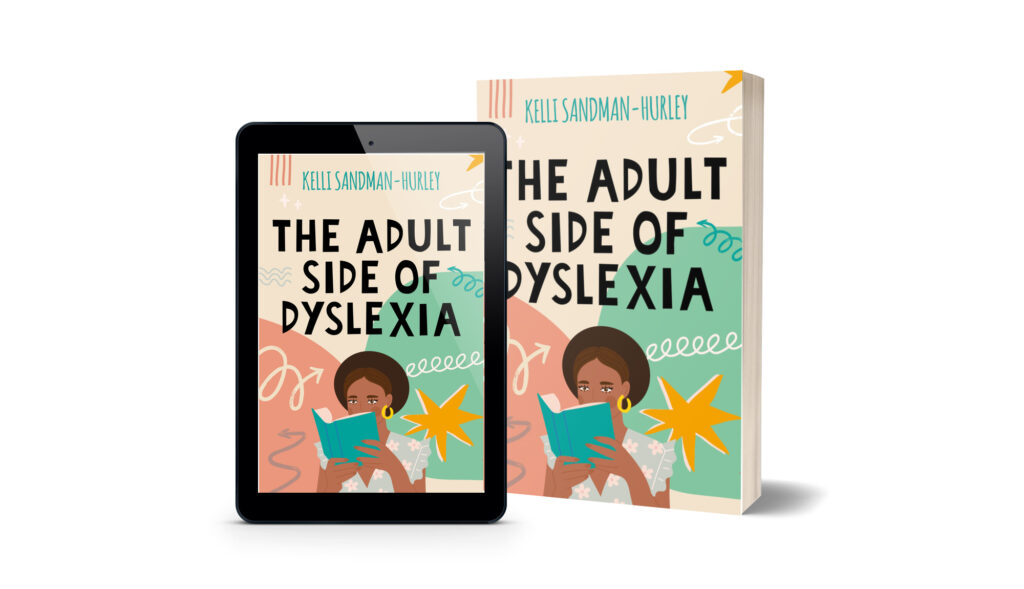The Adult Side of Dyslexia by Kelli Sandman-Hurley provides needed guidance around what life is like for an adult with dyslexia.

Long before I became interested in dyslexia, I worked at the adult literacy program of the San Diego Public Library. During that time, I met hundreds of adults who came to the library hoping to improve their literacy skills. When many of the adults walked through the doors of the program, they were full of shame, disappointment and frustration. They usually didn’t understand why reading and spelling was so difficult. Literacy issues disrupted and, often, derailed their lives. They told me stories of feeling misunderstood, invisible, and confused about why their intelligence did not match their performance.
“…it seemed easy for those working with struggling students to forget that dyslexic children become dyslexic adults.”
It’s hard to get help as adult when you’re underemployed, transportation challenged and/or childcare challenged. Coupled with insecurities and mistrust of the ‘system,’ these individuals still made the decision to ask for help. As I transitioned to working with kids and families with dyslexia, I always carried those adults in my heart. I have continued carrying them with me to every IEP meeting, every training I taught or attended, and every time I talked to anyone about dyslexia. As I got deeper into advocacy, I noticed that it seemed easy for those working with struggling students to forget that dyslexic children become dyslexic adults. This prompted me to return to my passion. I began to talk with dyslexic adults and use their experiences to help teachers and parents of those currently struggling so that they might struggle just a little less than their predecessors.
Another experience that led to my passion for this community happened early on in my career. I rarely talk about it, but my time working at a residential treatment center for teenage moms, when I was fresh out of undergraduate school, had a huge impact on me and my desire to help. I remember just about every young lady there and I remember how so many of them struggled with reading. They did not read to their babies because they could not read themselves. I remember the aura of toughness they put up to hide their weaknesses. I remember their desperation to have a better life. Most of those girls did not have advocates and/or support at home. I hope this book helps those kids who don’t have an advocate and who don’t have access to expensive tutors.
“The Adult Side of Dyslexia intends to not only tell the stories of the adults who participated but to learn from their experiences.”
Students are neurodiverse. They all have their strengths and weaknesses. Schools are not built to respond to all that diversity. However, there are easy things schools can do to create a safe place for dyslexic students. It could be easy as acknowledging the effort and motivation of students or as easy as never making them read out loud. It could be as easy as talking to them about their reading struggles, including them in the intervention process, and most importantly, respecting their intellect.
This book intends to not only tell the stories of the adults who participated but to learn from their experiences. I’m hopeful that the themes I was able to identify will be useful to anyone who knows someone with dyslexia. I’m hopeful that it will help increase awareness. Ultimately, I hope it will create empathy to inform instruction on how we treat students, and their families, with dyslexia.
Those working in school settings might find themselves surprised to learn some of things the adults shared about their classroom experiences. The adults’ stories often convey how an off-the-cuff comment like “just focus” or “try harder” can live in the mind and self-esteem of a dyslexic student forever. This book includes a section of what teachers can do to improve the school experience for these students based on the students’ own stories and only based on their stories.
“The Adult Side of Dyslexia hopes to be the bridge between their experiences and a better future…”
Every single day, students with dyslexia attend school and hope they don’t get called on to read out loud. They perseverate over whether they should use a word they can spell or use a word that will reflect their true intellect. They wonder why their peers can read so easily. Once they graduate, they often feel helpless and abandoned and have often gone without improved literacy skills. This book hopes to be the bridge between their experiences and a better future for those kids who are currently sitting in a classroom just wishing someone would understand.
Preorder Kelli’s book here: https://www.amazon.com/Adult-Side-Dyslexia-Kelli-Sandman-hurley